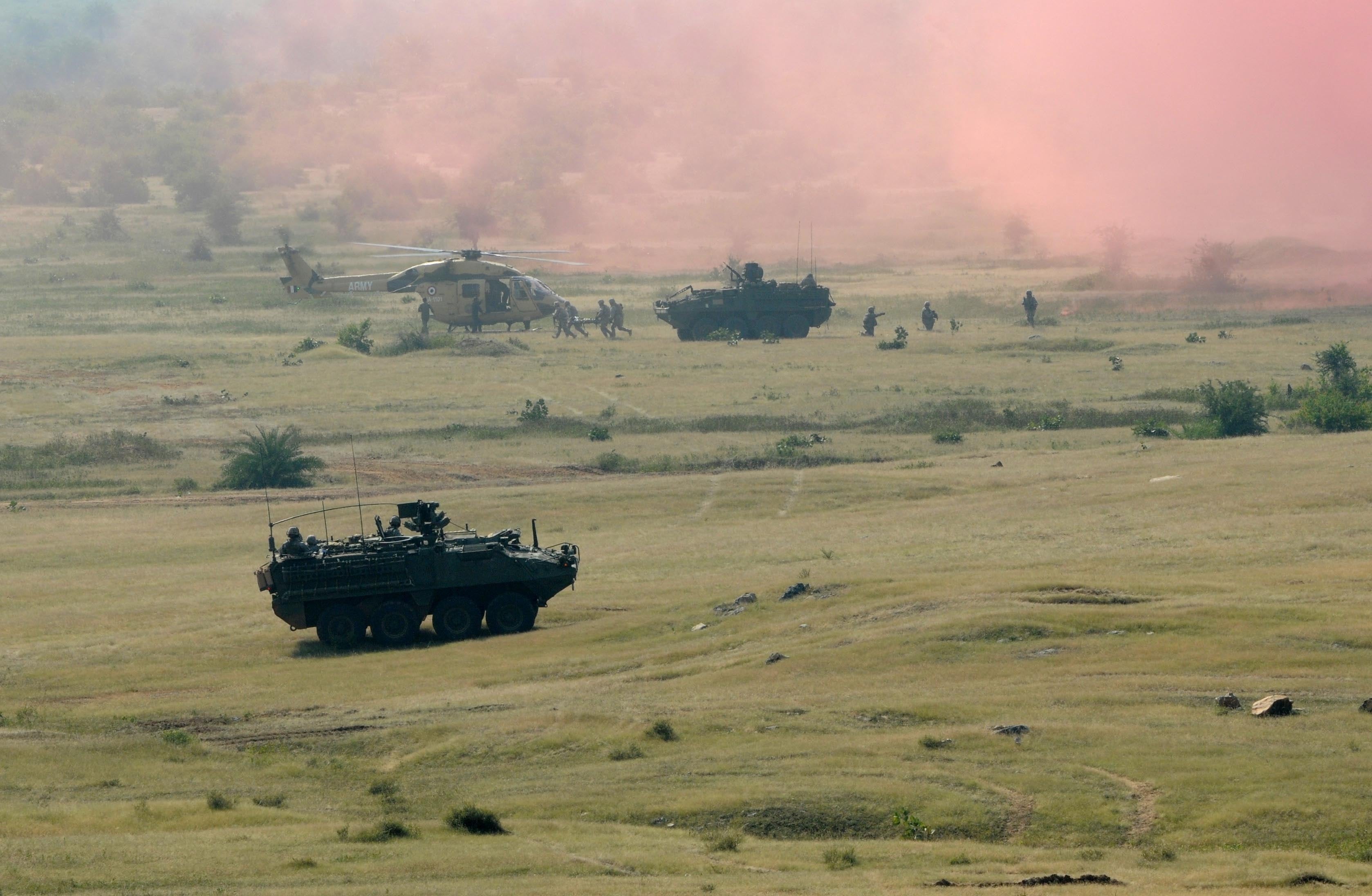The 25th Infantry Division will begin reorganizing its Stryker brigade and combat aviation brigade this spring as the Army continues to draw down and reorganize the force.
The moves will result in a loss of about 1,200 soldiers, said Maj. Gen. Charles Flynn, the commanding general of the Hawaii-based division, during an interview Monday.
The upcoming changes are part of a 40,000-troop reduction that is scheduled to take place over the next two years. The plan, announced last summer, will take the active Army down to an end-strength of 450,000 soldiers.
Driven by the Budget Control Act of 2011 and ongoing budget cuts, the reductions are expected to impact nearly every Army installation at home and overseas.
Since 2012, the Army has cut 80,000 soldiers and shut down 13 brigade combat teams, including two in Germany and one in South Korea. All of those cuts brought the active Army to an end-strength of 490,000, down from the wartime high of 570,000.
The 25th Infantry Division's 2nd Stryker Brigade Combat Team will begin converting in March, and the work is expected to run through July, Flynn said.
"We've got about 330 Strykers we've got to divest ourselves of," Flynn said during a wide-ranging interview Monday with reporters at the Pentagon.
The Strykers are scheduled to be moved to the Washington National Guard's 81st Armored Brigade Combat Team, Flynn said. The 81st ABCT has its headquarters in Washington State, with subordinate units in California, Oregon and Washington.
That unit will then convert into a Stryker brigade, giving the Guard a Stryker brigade on both coasts. The Guard now has one Stryker brigade; it is stationed in Pennsylvania.
As it sheds the Strykers, the 25th Infantry Division will bring in equipment unique to an infantry brigade combat team to complete 2nd BCT's conversion, Flynn said.
The brigade also will deactivate one of its infantry battalions — 1st Battalion, 14th Infantry Regiment — because infantry BCTs outside the United States have two maneuver battalions compared with the three that reside in Stryker BCTs, Flynn said.
"We've got a unique challenge that this is considered an overseas assignment, so when a soldier comes here, it's a three-year assignment," he said. "We're trying to make sure we look after soldiers and families and career paths and not damage any of that."

More than 300 Strykers with the 2nd Stryker Brigade Combat Team, 25th Infantry Division will be transferred to the Washington National Guard.
Photo Credit: Army
The goal is to "make sure no one gets lost in the transition of that brigade combat team," Flynn said.
In preparation for the transition, soldiers in 2nd Brigade will conduct a "large home-station exercise" in late January, Flynn said. After the conversion is complete, the brigade will conduct a second exercise later in the year.
"We've got these bookended training events … so their readiness doesn't drop too low," Flynn said.
After the second exercise, the brigade will move on to the Joint Readiness Training Center at Fort Polk, Louisiana, for a validation exercise, he said.
The 25th Combat Aviation Brigade will begin its conversion around the same time, Flynn said.
Apaches arriving soon
The brigade's 2nd Squadron, 6th Cavalry Regiment returned in November from a nine-month deployment to South Korea. Since then, the unit has shed its OH-58 Kiowa Warriors and is preparing to receive AH-64 Apache helicopters, Flynn said.
The conversion is part of the Army's five-year Aviation Restructuring Initiative. Part of the plan eliminates the Kiowa, the venerable armed scout reconnaissance helicopter, from the Army's inventory and replaces it with Apaches.
"We are now receiving Apache pilots and leadership and maintainers," Flynn said.
The helicopters will begin arriving in Hawaii in March or April, he said. The squadron will have 24 in all.
Amid all these changes, the 25th Infantry Division remains busy across the Pacific, Flynn said.
"With the capabilities we have here in the 25th Infantry Division, we're a pretty visible presence in the rebalance to the Pacific," Flynn said.
The plan for Pathways
This includes three Pacific Pathways rotations this year, the first of which is already underway.
Pathways made its debut in 2014 when more than 800 soldiers from the 2nd Stryker Brigade Combat Team, 2nd Infantry Division, of Joint Base Lewis-McChord, Washington, spent three months in Asia.
The Pathways concept employs a single unit through what officials call a "training pathway." The unit spends three to four months in a series of already approved, consecutive bilateral and multilateral exercises and engagements with foreign militaries.
Pathways are part of the Army's contribution to the United States' rebalance to the Asia-Pacific region. They also line up with the Army's regionally aligned forces concept, which aims to commit troops to a specific region of the world to support the geographic combatant commanders.
This year, through Pathways, the Army will train with nine partner armies, Flynn said. Countries on the schedule include Thailand, South Korea, the Philippines, Malaysia, Indonesia and Australia.
The first Pathway is scheduled to run from January through April. The second and third rotations will begin in May and run through September, with some overlap, Flynn said.
"There are some huge readiness gains that we're finding as a result of continuous deployment," he said.
These gains include regional expertise and growing relationships with partner militaries in the region, he said.
"These soldiers, young soldiers, they want to be deployed, they want to be engaged, they want to be out, committed and doing the Army's work," Flynn said. "Our soldiers [after Iraq and Afghanistan] expect and know how to partner and fight alongside our partners. The experiences they get from that are exponential."
Michelle Tan is the editor of Army Times and Air Force Times. She has covered the military for Military Times since 2005, and has embedded with U.S. troops in Iraq, Afghanistan, Kuwait, Haiti, Gabon and the Horn of Africa.





